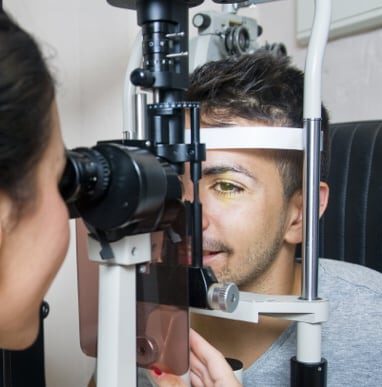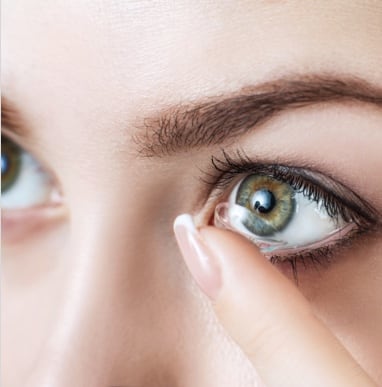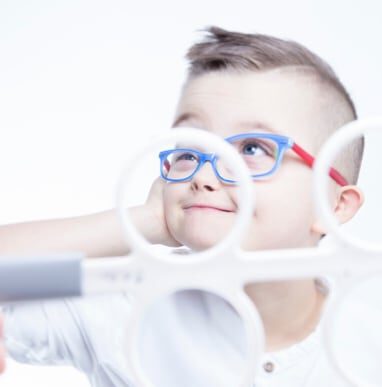Imagine looking at the world through a lens that’s slightly off-kilter; that’s the reality for those with eye misalignment. This condition affects your binocular vision, which simply means how well your eyes work together. You may have eye misalignment from birth, but it could be caused or triggered by brain injuries, diabetes, thyroid disease, or other health conditions.
Even though it’s typically first diagnosed in childhood, it can affect anyone, from young children to adults. Once we recognize eye misalignment, we can help restore or improve your sight with vision therapy.
What is Eye Misalignment?
As its name may suggest, eye misalignment occurs when the eyes do not properly line up with each other. This condition disrupts binocular vision, which is vital for depth perception and a unified view of the world. Think of your eyes like 2 cameras. They each send a slightly different image to your brain, which then stitches it all together to give you a clear image.
However, when your eyes send the wrong image, your brain doesn’t know what to do. In turn, your eyes work harder and it can cause symptoms such as:
- Double vision
- Eye strain
- Poor depth perception
- Blurry vision
- Headaches
In children, eye misalignment is often due to congenital issues or developmental delays. Conditions such as cerebral palsy or Down syndrome can increase the likelihood of developing strabismus. Meanwhile, adults may experience eye misalignment due to head trauma, stroke, or diseases that affect the muscles or nerves controlling eye movement.
The Types of Eye Misalignment
Understanding the different types of eye misalignment is crucial for proper diagnosis and treatment. Your optometrist can use several tests to evaluate how well your eyes work together during an eye exam, including:
- Visual acuity tests
- Alignment tests
- Focusing ability assessments.
Additional diagnostic tools, such as computerized image analysis, can also help identify subtle misalignments that might be missed otherwise. All together, this helps us determine what type of eye misalignment you or your child is living with.
Strabismus
Strabismus is one of the more visible signs of eye misalignment. Also known as crossed eyes, it refers to when one eye turns inward, outward, upward, or downward. However, this may not be a constant turn, and it may only happen when someone is focusing on an object.
Strabismus isn’t just a cosmetic feature; it can impair binocular vision and depth perception. It’s usually diagnosed in babies and young children, but older people can certainly develop it too. Despite the belief that children will outgrow strabismus, this isn’t true. It can be treated fairly easily if children are still young, but grows more difficult to correct as one grows older.
Amblyopia
Amblyopia, commonly known as “lazy eye,” occurs when one eye becomes weaker than the other due to uneven visual experience during early childhood. This condition often develops because the brain favors one eye over the other. The brain steadily chooses not to use the weaker eye, which then makes the eye even weaker, the brain uses it less, and so on.
Early intervention, such as using corrective lenses or eye patches, can improve visual function in the weaker eye.

Convergence Excess/Insufficiency
Your eyes do a lot of work behind the scenes you may not realize. For example, when you focus on a near object, your eyes need to work together to change focus and reorient your vision. Convergence excess and insufficiency refer to a problem with how your eyes come together when focusing on near objects.
Convergence excess is when 1 or both eyes turn in too much when focusing, while convergence insufficiency is the opposite and your eyes struggle to converge on a single point. Both of these problems can make it difficult to do certain types of work, such as reading or using a computer. Because it only occurs when you’re focusing on something nearby, some people may not realize there’s a problem with their vision—even if they’re dealing with daily eye fatigue and headaches.
Vertical Heterophoria
Vertical heterophoria is a less common type of eye misalignment where one eye is higher than the other. This vertical discrepancy can lead to chronic headaches, dizziness, and imbalance. Eye doctors may use specialized prism glasses and vision therapy to correct any misalignment and alleviate symptoms.
Vision Therapy for Eye Misalignment
Vision therapy offers a non-invasive treatment for eye misalignment based on training your brain to correct vision. Vision therapy involves a series of exercises or special lenses designed to strengthen the eye muscles and improve coordination. Think of it as physical therapy for your eyes. These exercises are usually tailored to the specific needs of the individual and can be done both in-office and at home.
Through consistent practice, vision therapy can help retrain the brain to use both eyes together efficiently. This improves visual skills and can significantly reduce or even eliminate symptoms like double vision and eye strain. It’s a time-intensive process but one that can yield long-term benefits without the need for surgical intervention.
Bringing the World Into Focus
Eye misalignment can be a challenging condition to live with, affecting everything from daily activities to overall quality of life. However, treatments like vision therapy can make a world of difference. If you or a loved one is experiencing symptoms of eye misalignment, don’t wait. Early intervention can mean better outcomes and a clearer future. Book an eye exam today and discover how we use vision therapy to support healthy vision for kids and adults alike. Our Vision Care Center team can help you take the first step toward more comfortable vision!












